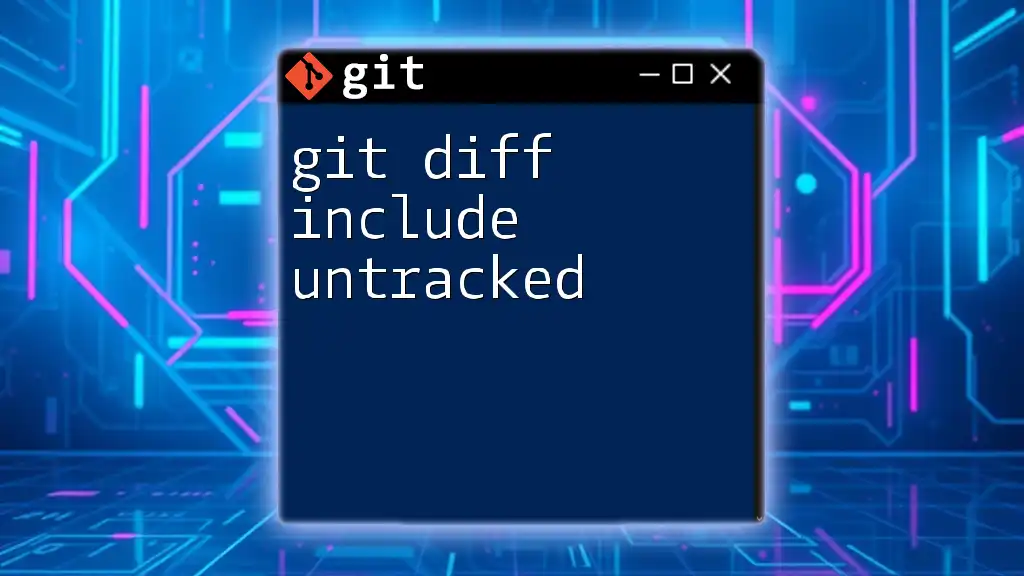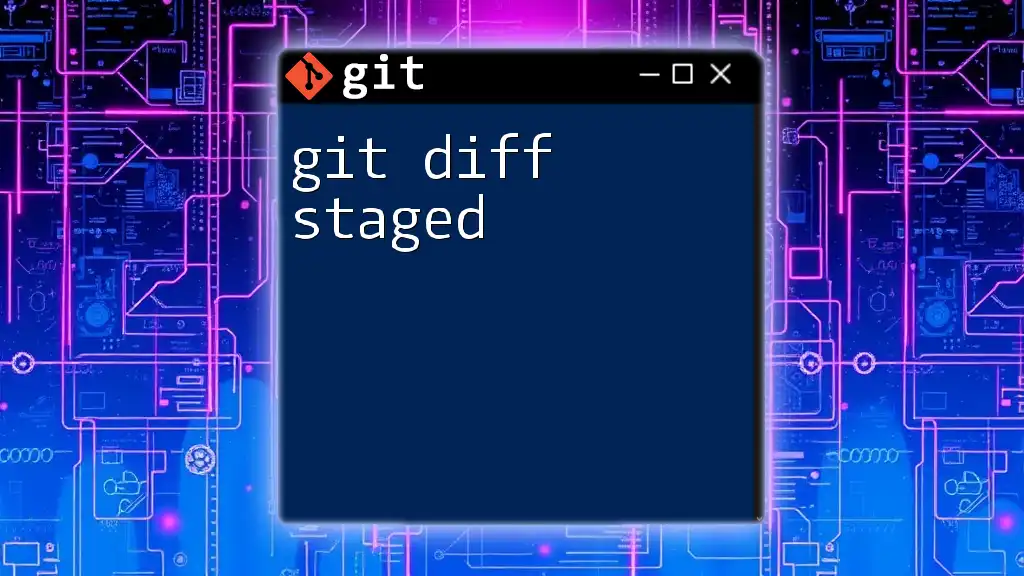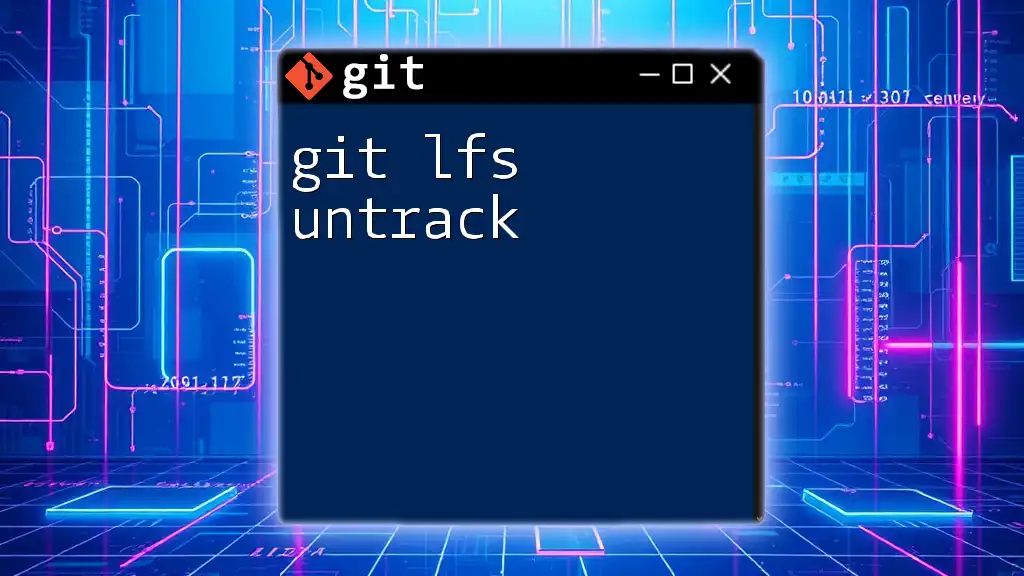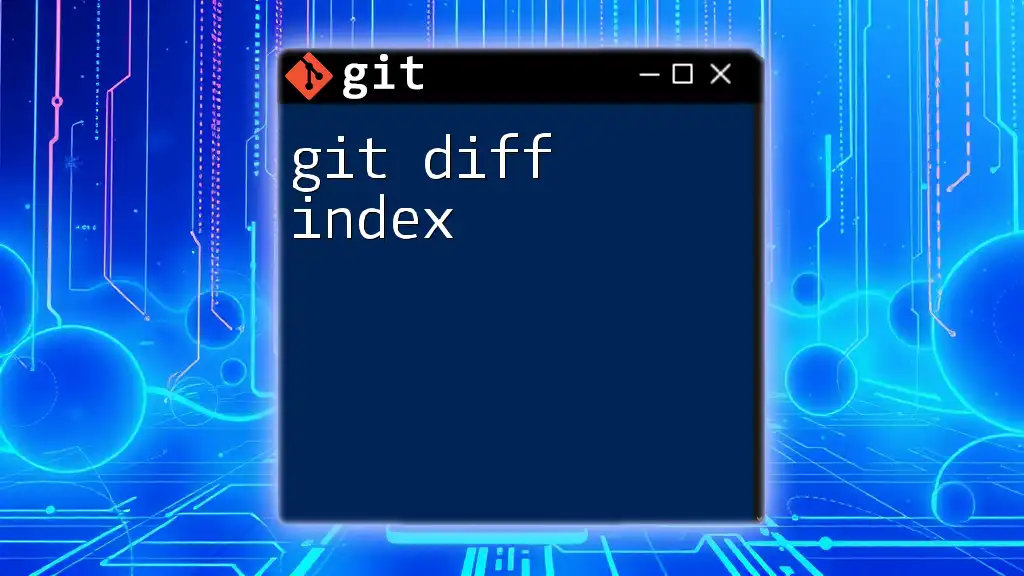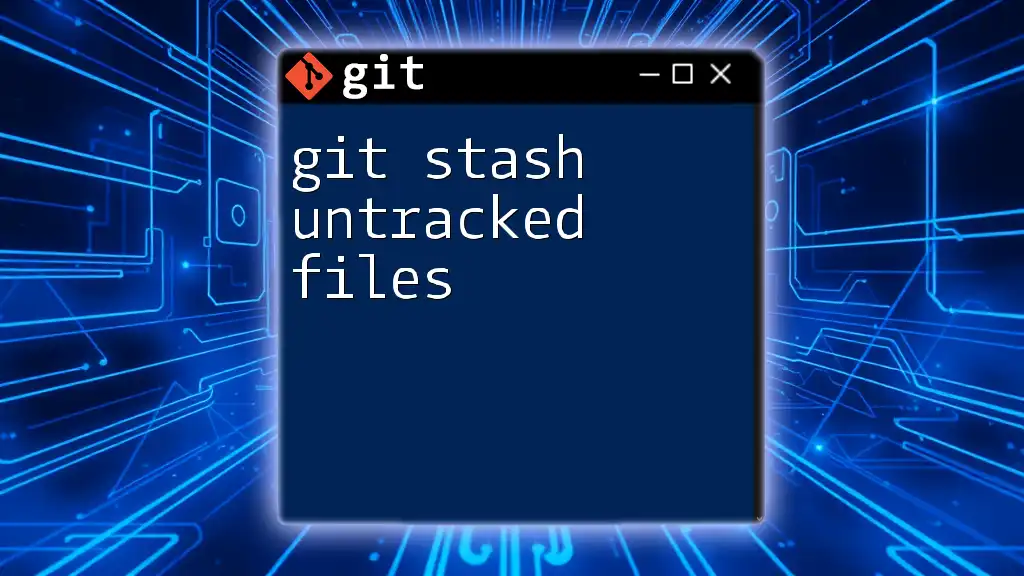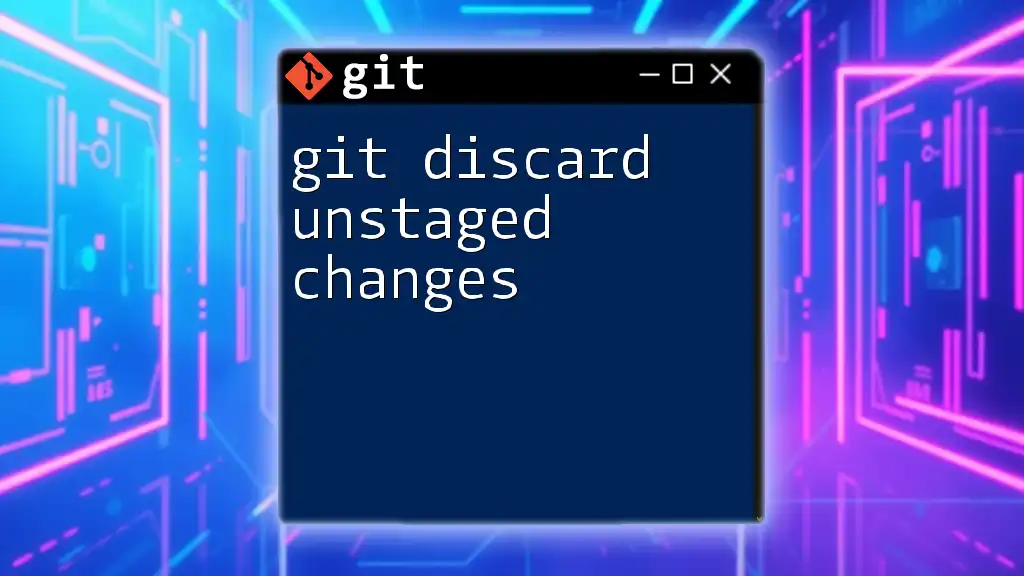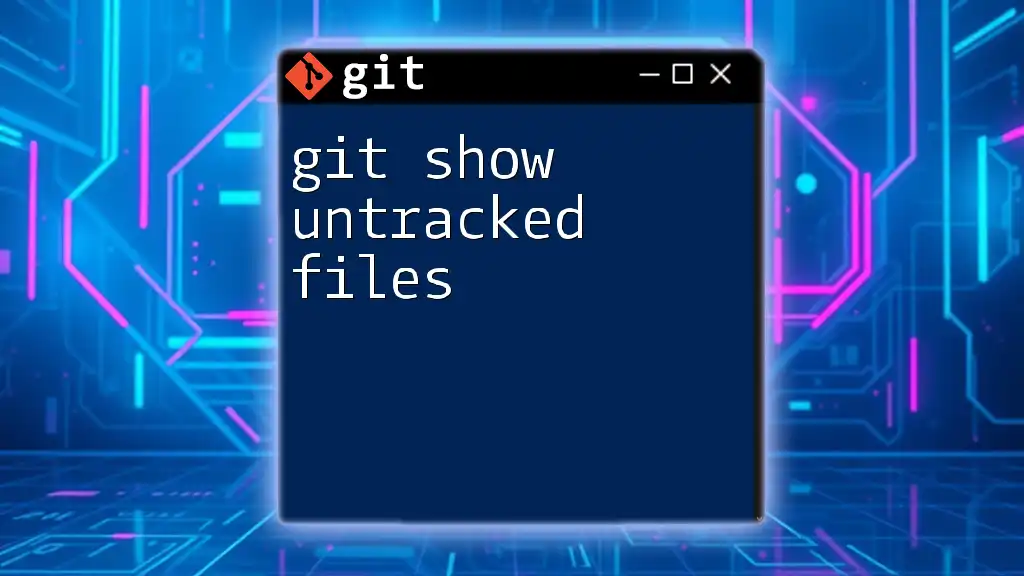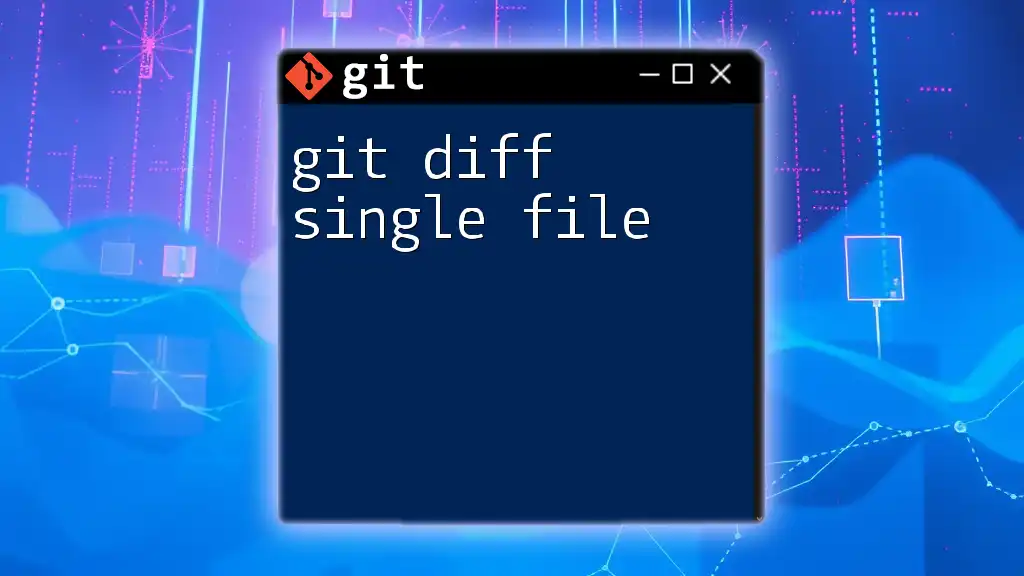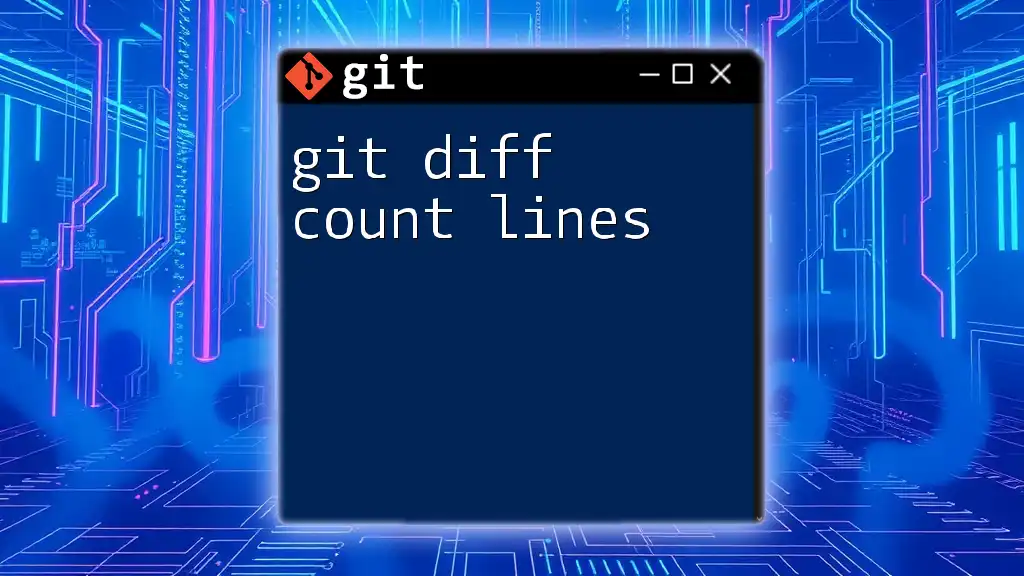The `git diff` command shows the differences between the working directory and the index, but to include untracked files, you can use `git diff --cached -- <file>` for tracked changes, along with a visual inspection for untracked files since Git does not directly show differences for untracked files.
git diff --cached
# To check untracked files, use:
git status
Understanding `git diff`
What is `git diff`?
`git diff` is a vital command in Git that allows you to track changes between various states of your files. Specifically, it compares different versions of your files to see what has been modified or added since a particular point. This could be comparing your working directory with the staging area or comparing different commits. The command is an invaluable tool for developers as it provides visibility into code changes, aiding in collaboration and review processes.
Why Use `git diff`?
Utilizing `git diff` is essential for maintaining an understanding of changes within your project. By leveraging it, you can:
- Review Changes: Before committing code, you can check what modifications you have made.
- Debugging: Identify issues or bugs by quickly seeing what has changed since the last stable version.
- Collaboration: Communicate effectively with team members regarding recent changes to the codebase.
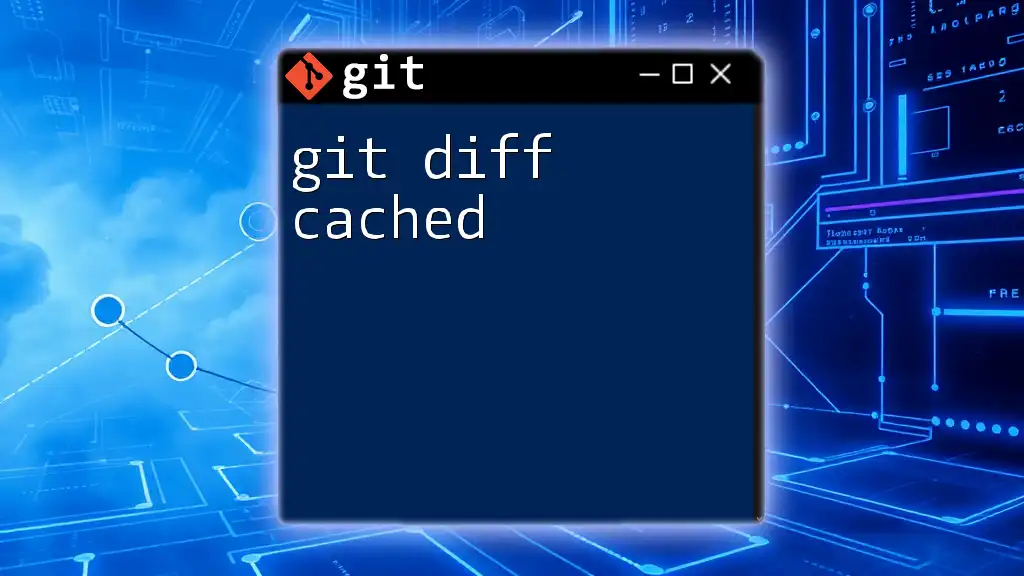
The Role of Untracked Files
Definition of Untracked Files
Untracked files are those that have been created but are not yet being followed by Git. These files are not in the staging area or in any commit. They exist in your project but are not tracked by Git’s version control. This can happen, for example, when you create a new file but haven’t added it to the repository with `git add`.
Why Untracked Files Matter
Understanding untracked files is crucial, particularly because:
- Project Organization: It’s important to keep track of what you are adding to avoid accidental loss.
- Commit Clarity: Including untracked files in your `git diff` review can help ensure that your commits only capture intentional changes.
Ignoring untracked files during development can lead to confusion or oversight, especially in collaborative environments.

The Command: `git diff --include-untracked`
What Does `git diff --include-untracked` Do?
The command `git diff --include-untracked` provides a comprehensive view of both tracked and untracked files. While the standard `git diff` command reviews changes in tracked files, the `--include-untracked` option allows users to see what untracked files exist as well. This feature can be particularly helpful when you need a full view of your working directory before committing.
Syntax and Options
The basic syntax for this command is straightforward:
git diff --include-untracked
You can also combine options. For example, you may use `--name-only` to list only filenames or `--color` to enhance readability:
git diff --include-untracked --name-only --color
Using these options can help you refine the output according to your needs.
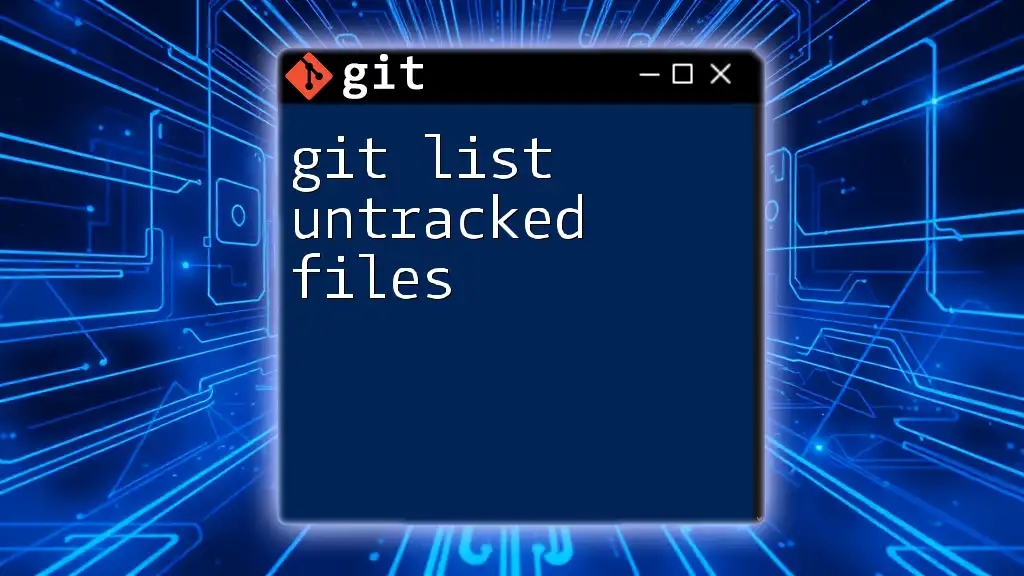
Examples of Using `git diff --include-untracked`
Basic Usage
Let’s walk through a basic example. First, create a new Git repository and add a tracked file:
git init myrepo
cd myrepo
touch tracked_file.txt
git add tracked_file.txt
Now, create an untracked file:
touch untracked_file.txt
Running the command:
git diff --include-untracked
You can expect to see an output indicating that `untracked_file.txt` is present and not tracked by Git, in addition to the changes in `tracked_file.txt`.
Comparing Changes
To demonstrate further, modify the tracked file with:
echo "Hello, World!" > tracked_file.txt
Now running:
git diff --include-untracked
You will see a summary of changes in `tracked_file.txt` along with the status of `untracked_file.txt`. The output gives you a clear view of what you need to consider before making a commit.
Practical Scenarios
This command is particularly useful during code reviews. If you’ve been working on several features, running `git diff --include-untracked` gives you a comprehensive view of your current working directory. You can ascertain whether all relevant changes are ready for commit and if any untracked files need to be addressed.
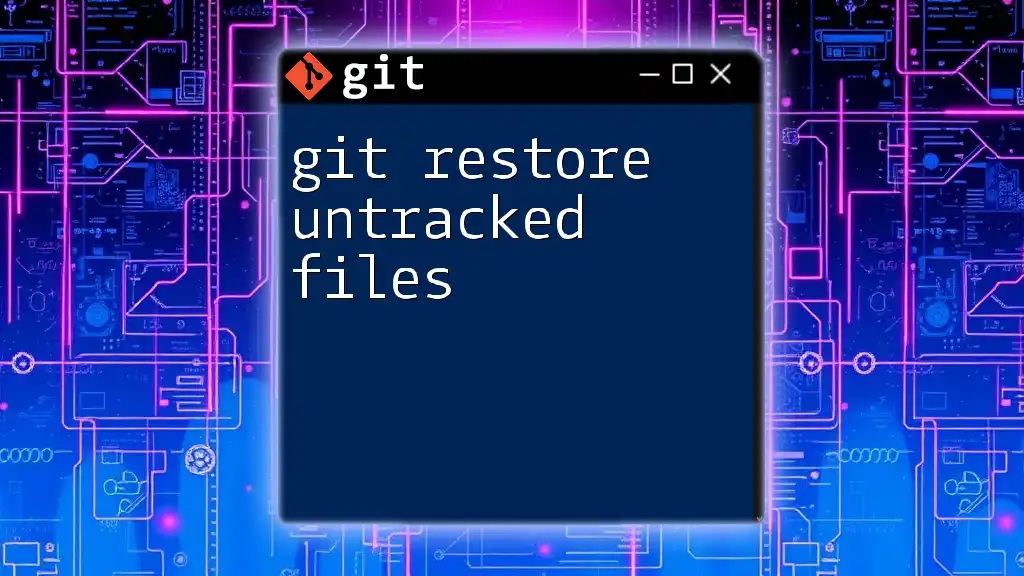
Best Practices for Using `git diff --include-untracked`
Integrating with Workflow
To maximize the benefits of this command, consider integrating it into your daily Git workflow. Before finalizing a commit, whether you’re one developer or part of a team, running `git diff --include-untracked` helps confirm that you’re fully aware of all changes and any new files that you might need to add to integration or deployment pipelines.
Common Mistakes to Avoid
When using `git diff --include-untracked`, you might encounter common pitfalls, such as:
- Overlooking Untracked Files: Be cautious not to ignore untracked files that are critical to your feature. Regularly running this command can help avoid missing essential files.
- Committing Unintentionally: Sometimes, you may find unintended untracked files that should not enter the version control. This command helps catch them before they slip through.
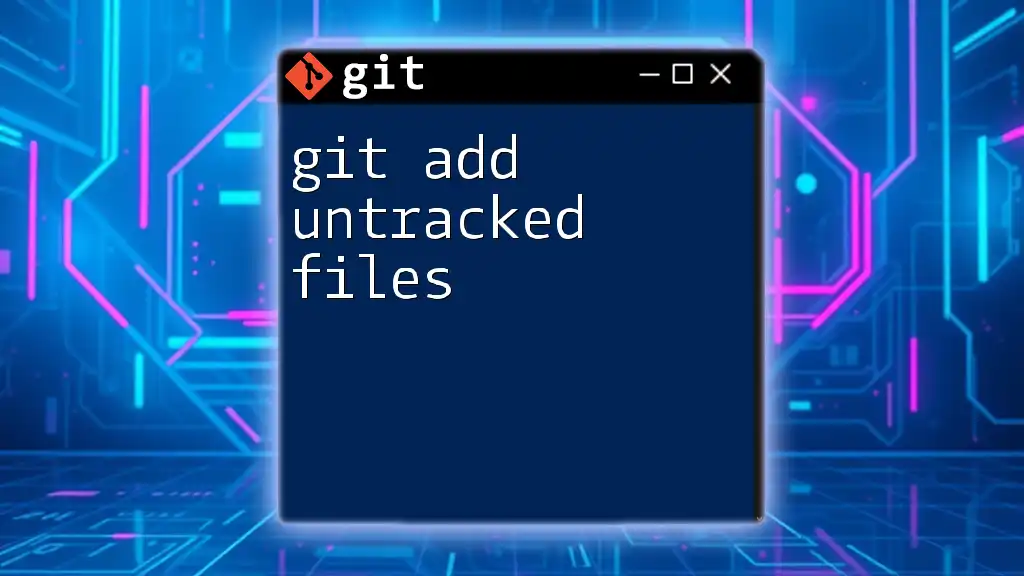
Conclusion
In summary, understanding and mastering the `git diff include untracked` command reveals a wealth of information about your project. Practicing its use will lead to more robust version control habits, enhancing your development workflow significantly. Take the time to integrate it into your routine and watch as your awareness of project changes grows, leading to cleaner commits and more efficient collaboration.
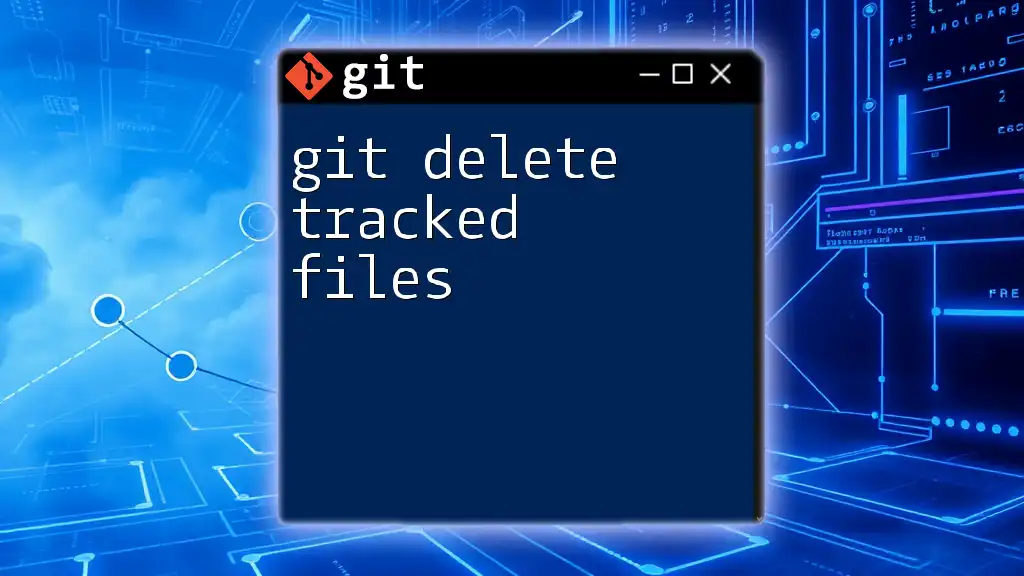
Resources
For further learning, consider exploring additional guides and tutorials on Git, which can provide you with a deeper grasp of version control and collaboration in software development.

